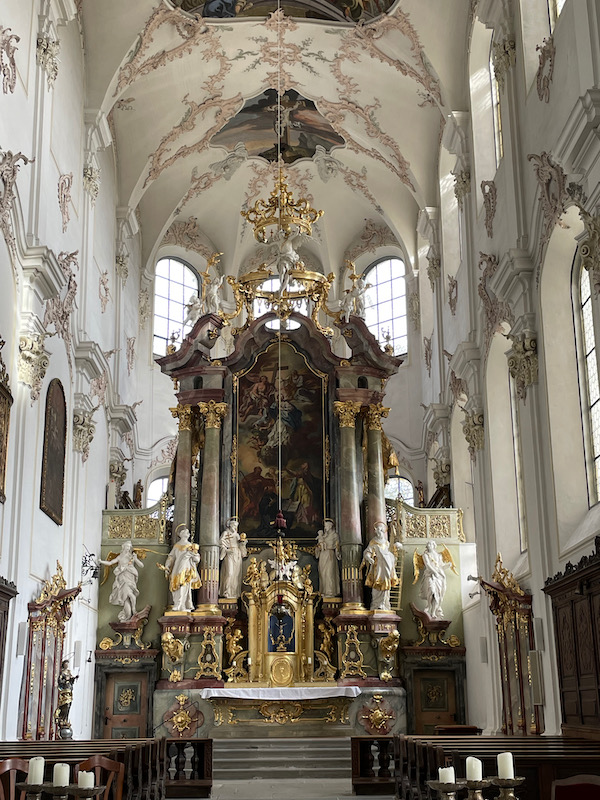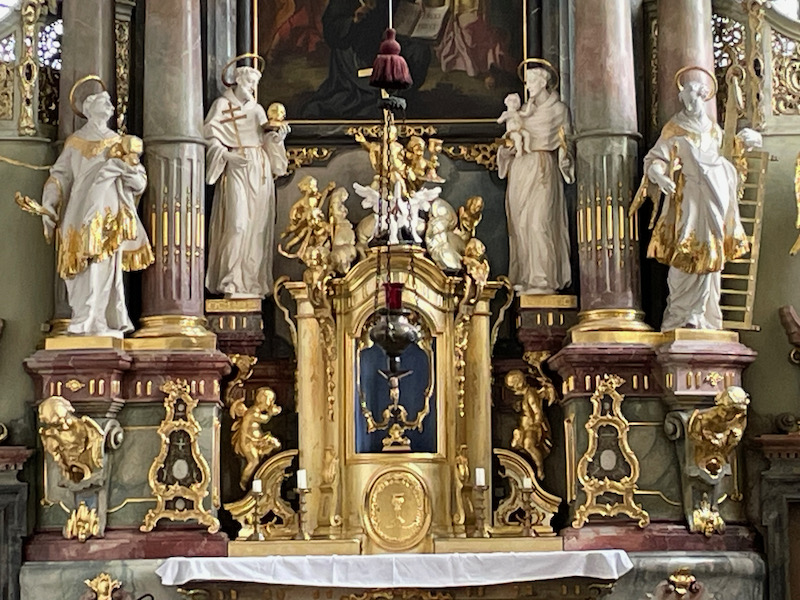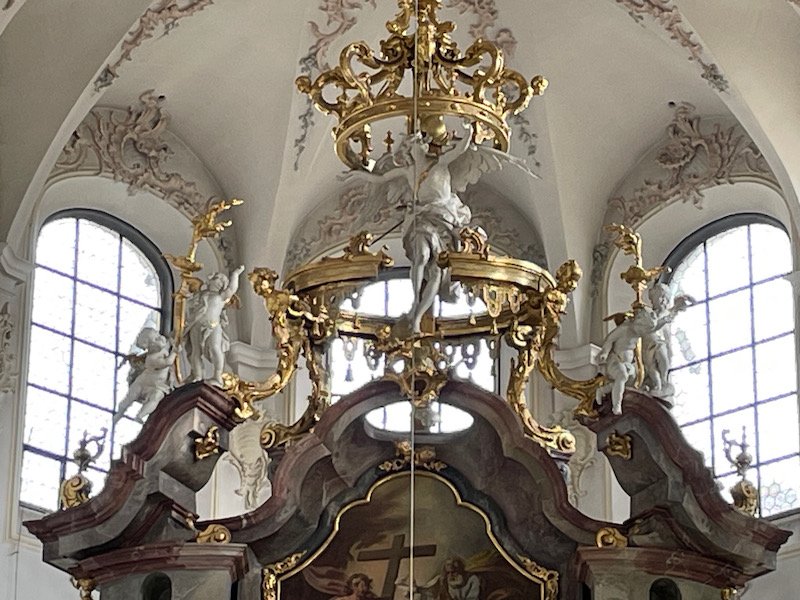Our Blog - Germany 2023 - Überlingen, Germany
The history of Überlingen dates back to Roman times with settlements on both sides of the lake. As the Romans retreated in the 400's, the area was taken over by the Franks and Goths. The city flourished in the 13th to 16th centuries, mainly due to widespread grapevine cultivation on the south-facing slopes of the Lake Constance. Then in the early 16th century, mineral waters from a nearby spring turned the city into a spa town.
The town also has some bad history ... in 2002, there was a midair collision between a small Russian passenger plane traveling to Spain with a bunch of children and a few chaperones, and a DHL cargo plane. There were no survivors from either plane and the debris fell in the northern Überlingen suburbs. Less than two years later, an air traffic controller on duty at the time of the accident was stabbed to death by a man who had lost his wife and two children in the accident. Shortly after that, an investigation determined that the accident was caused by shortcomings in the Swiss air traffic control system as well as issues with the on-board aircraft collision avoidance system.
First stop was the Rathaus, or Town hall, which was built in the 14th century and expanded in the 15th century. The building on the LEFT with the mosaics on the side, is the older part and the building on the right, with the Gothic doorway and stone front, is the addition.
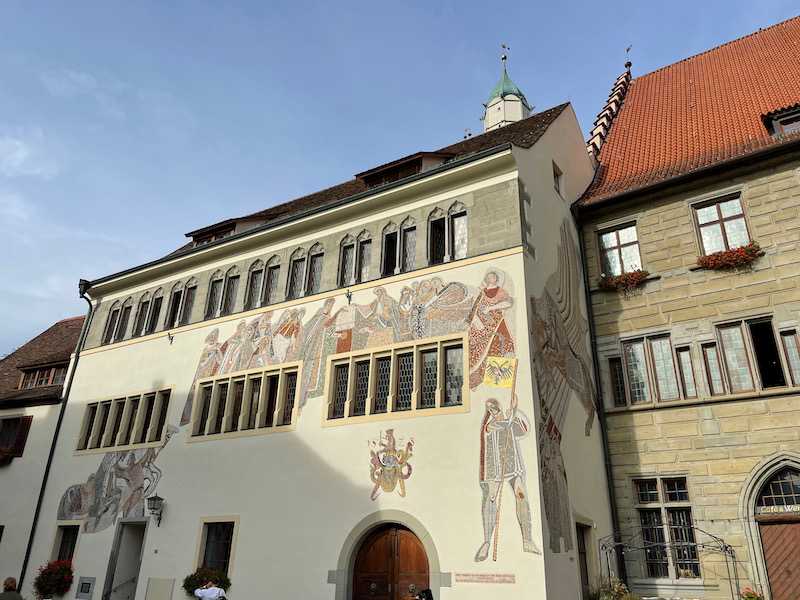
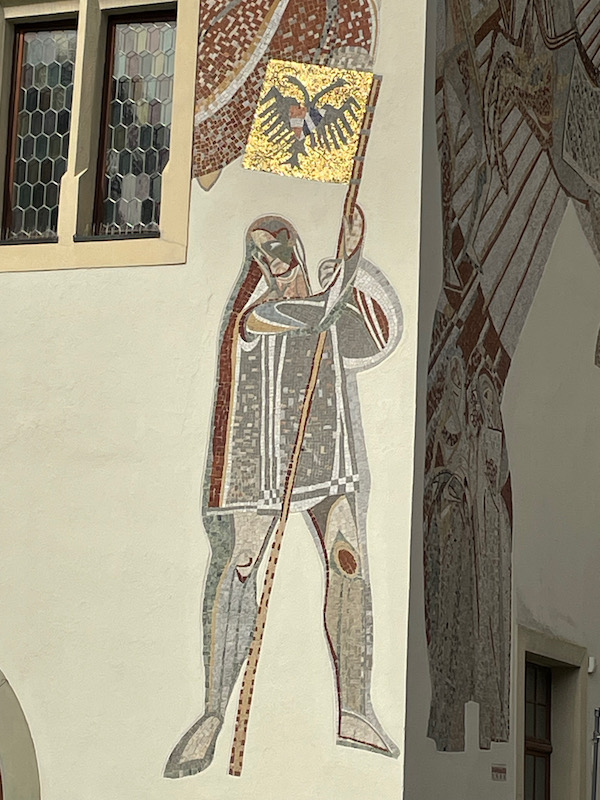
The Kaiserbrunnen, or Kaiser Fountain, was built in 1553. The figure on the fountain column is supposed to show Emperor Charles V, in armor, with the chain of the Golden Fleece.
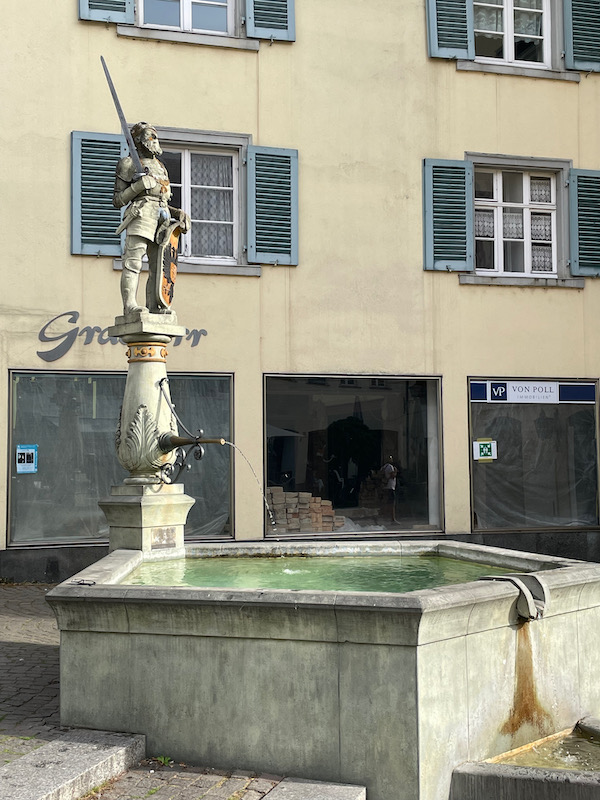
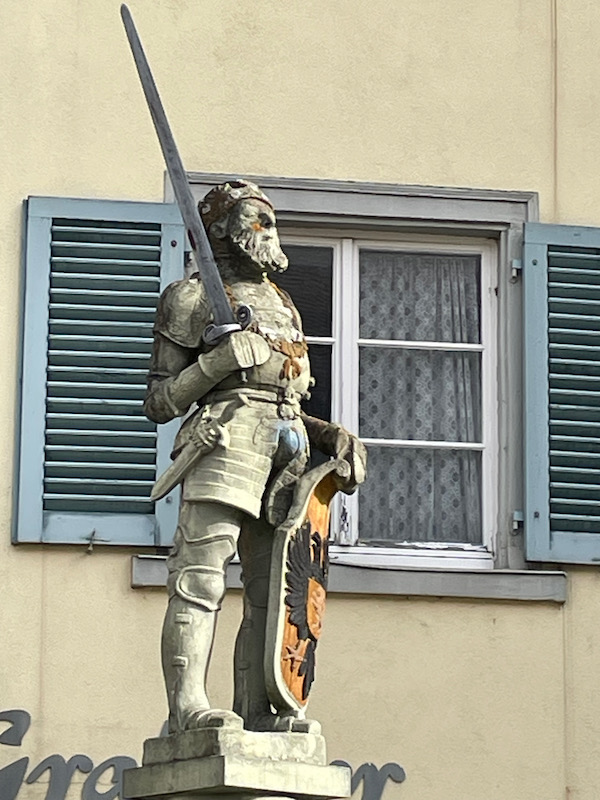
The St Nikolaus church has a somewhat interesting (and sad) history. The original church, build around 1000, was a single-nave church (also called a hall church), which was replaced by a longer, 3-aisled church in the 12th century. A new choir was started in Gothic style around 1350 but the sad part of this was that material that was used for this new building came from the properties of Überlingen Jews that had been confiscated in 1349. Construction continued until 1576, when the upper floors of the North tower were added, which towers over not only the church but also most of the town. You can see in the 1st picture the South tower, which is much shorter because it was never finished. The last 2 pictures here show a fresco and the decoration over the entry doors.
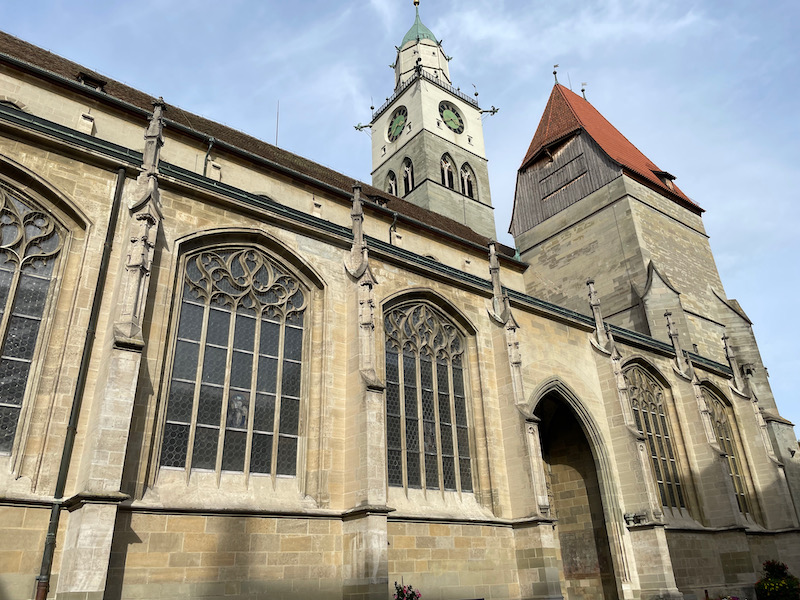
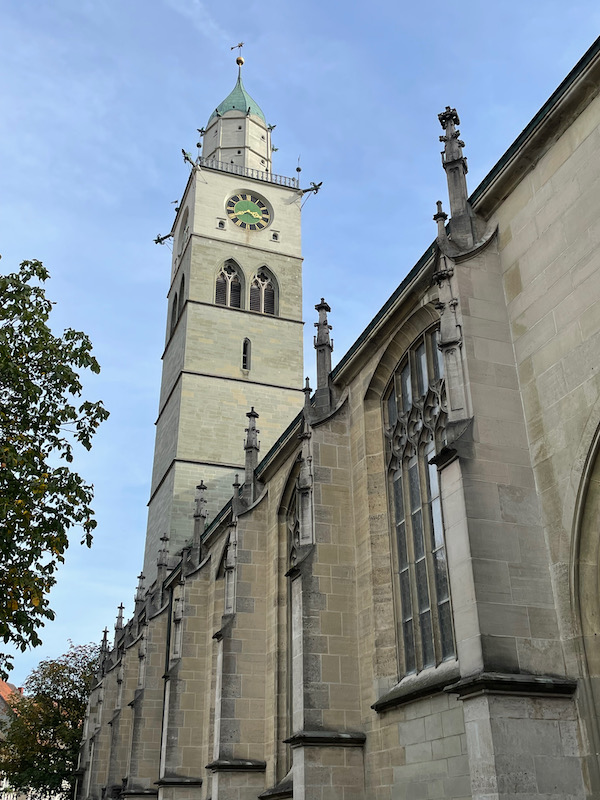
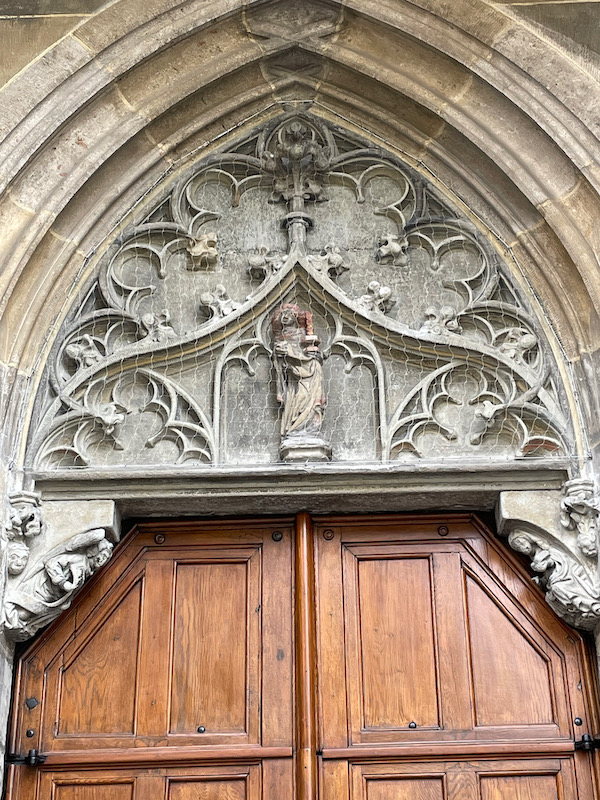
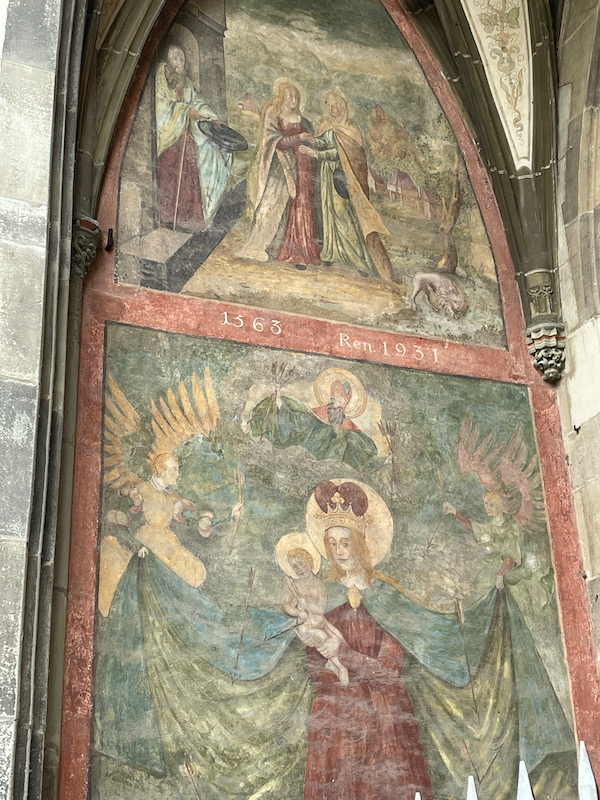
Here you can see the 3-aisles with the pointy Gothic arches and the ribbed ceiling vaults.
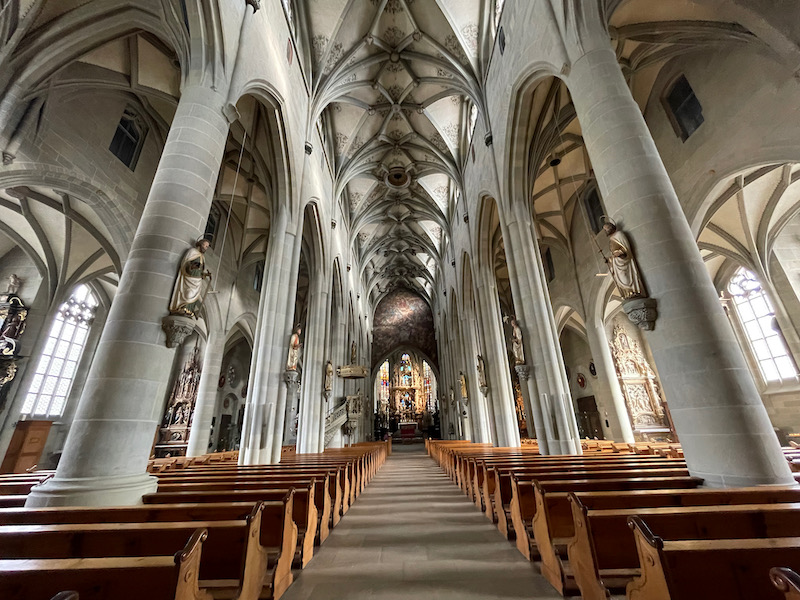
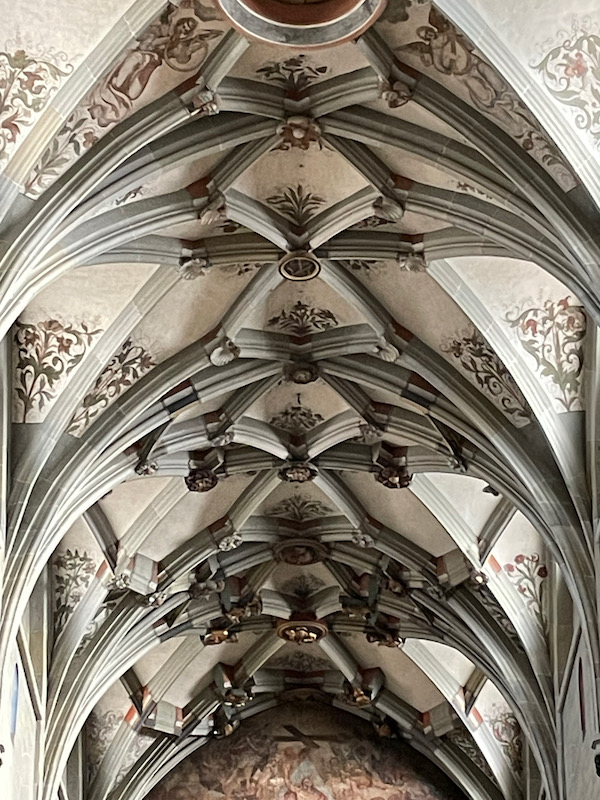
There are quite a few altars that date from the 15th to 19th centuries. This first one is the Holy Cross altar and the second is the Erhard altar. Along with the Erhard altar is a fresco depicting St. Elisabeth. The last 3 pictures are of the Rosary altar.
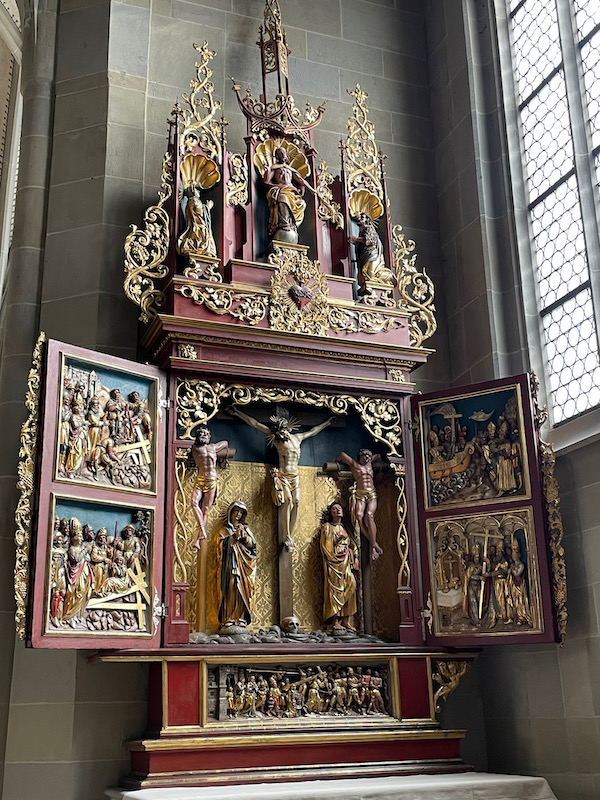
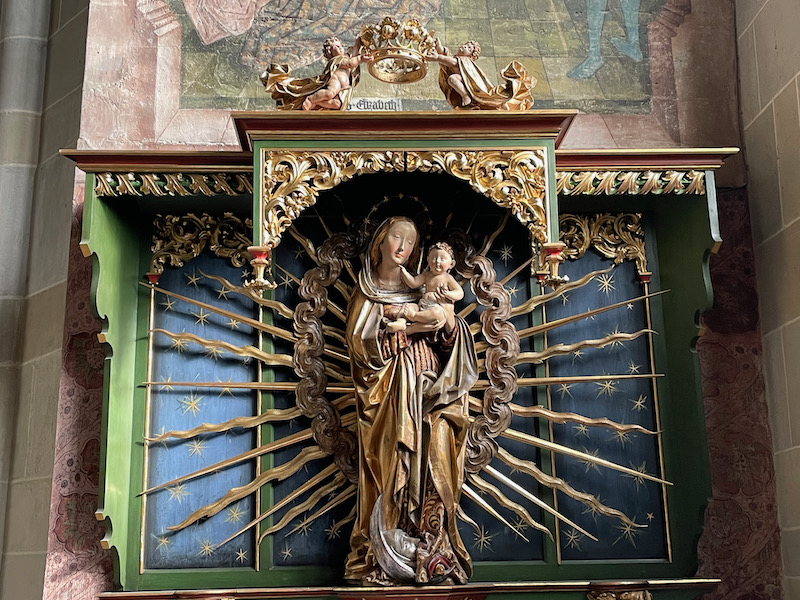
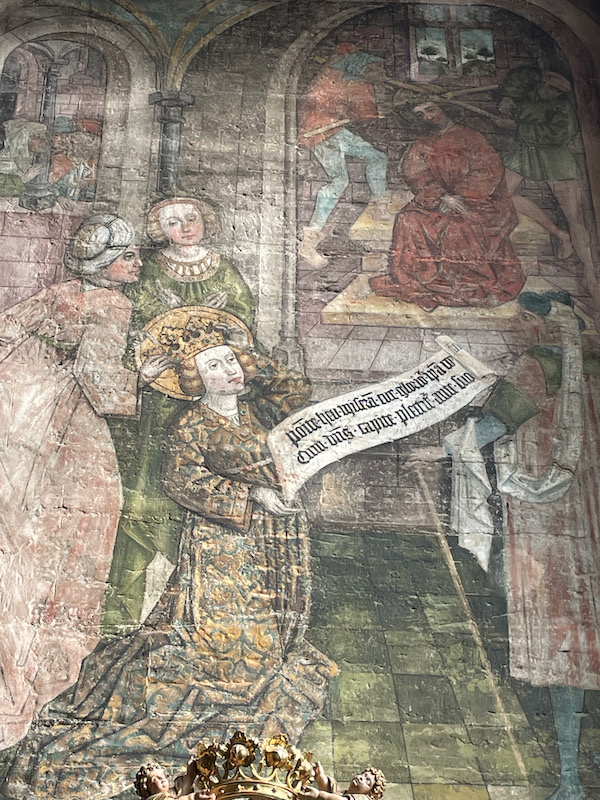
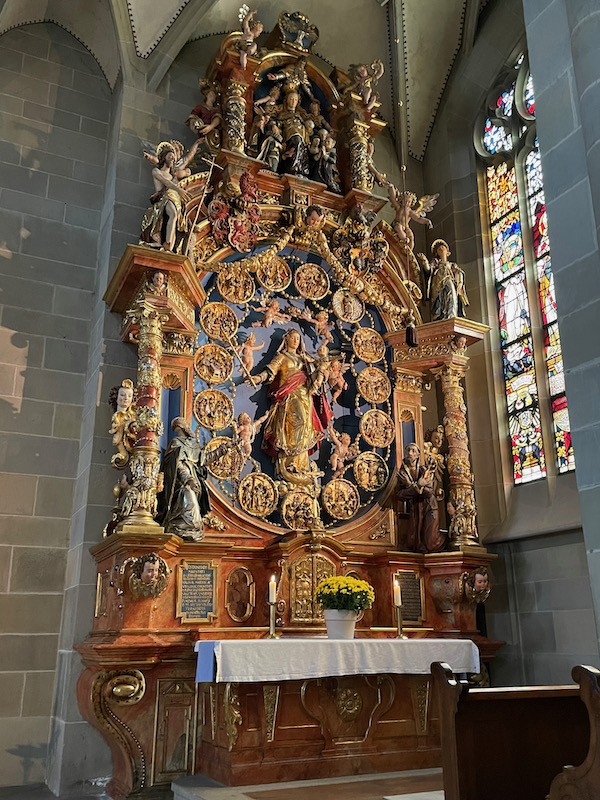
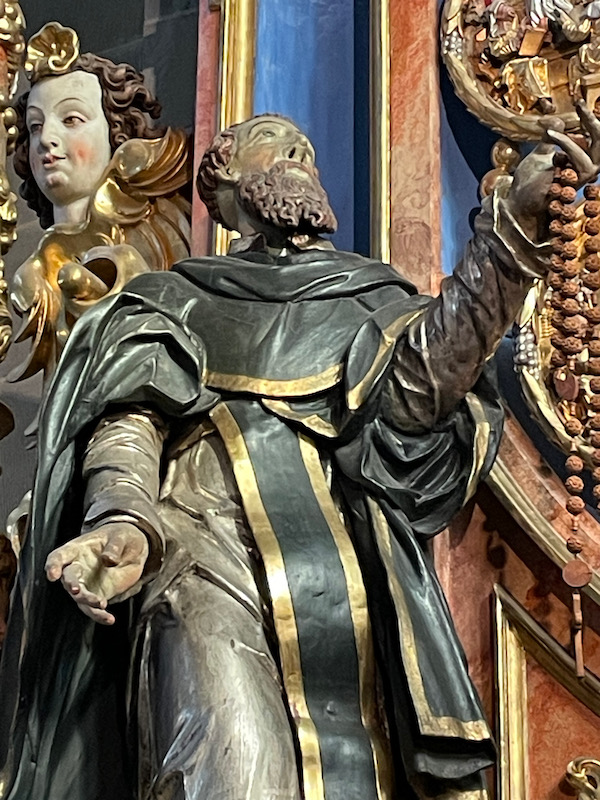
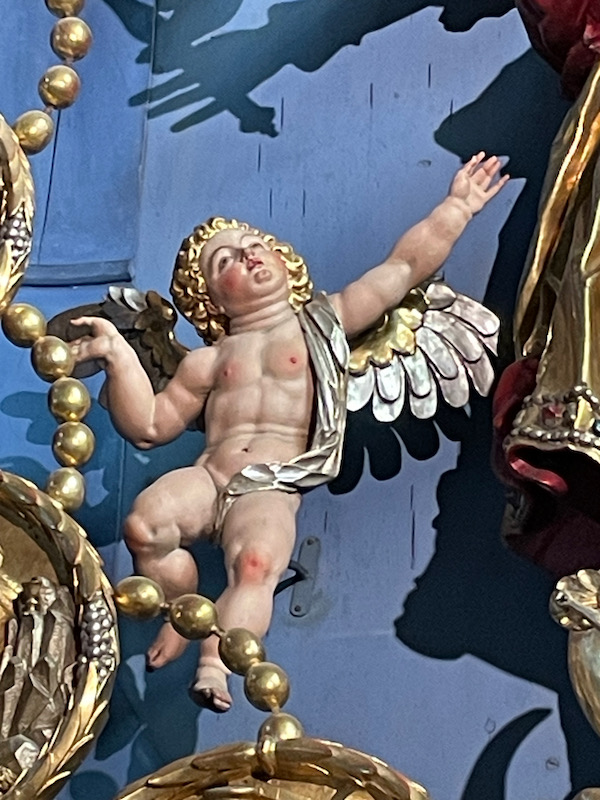
The wall above the choir arch is painted with a huge fresco depicting the Last Judgment, painted in 1722.
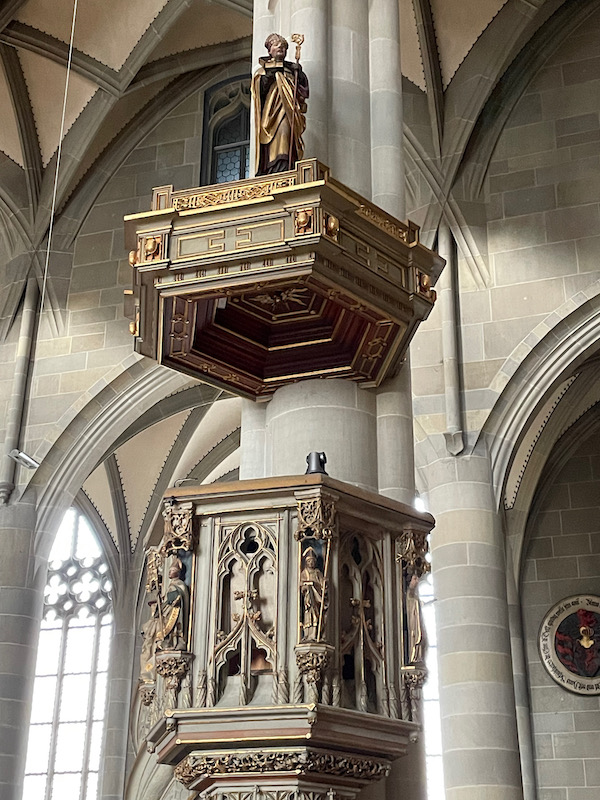
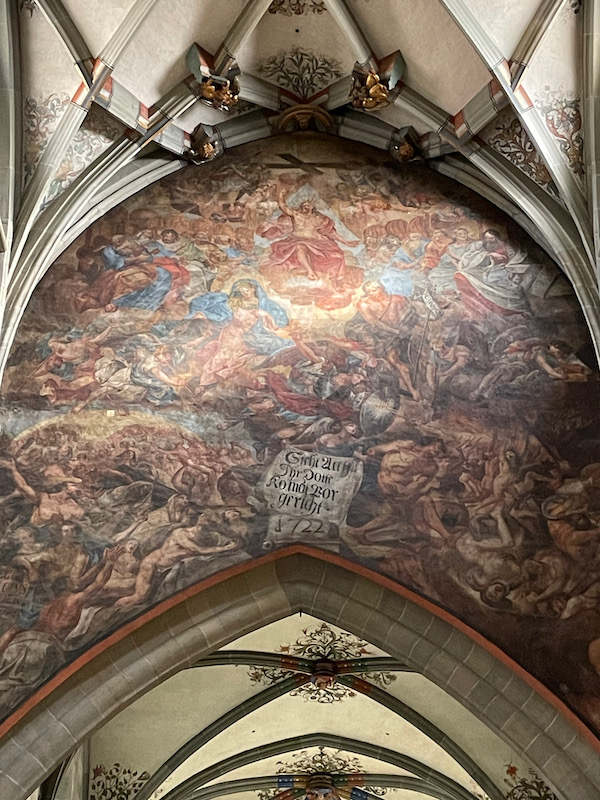
Finally, the most significant work of art is the carved high altar, which was carved by a local wood carver between 1613 and 1616. It is made of unpainted lime wood and is decorated with around 75 different carved figures. The birth of Christ is depicted in the center alongside saints and apostles, including Saints Roch and Sebastian, who were supposed to protect the city from the plague. Below this scene is the Annunciation, above the Coronation of the Virgin Mary. On the fourth level, below the final crucifix, is a figure of Bishop Nicholas of Myra, the church's patron.
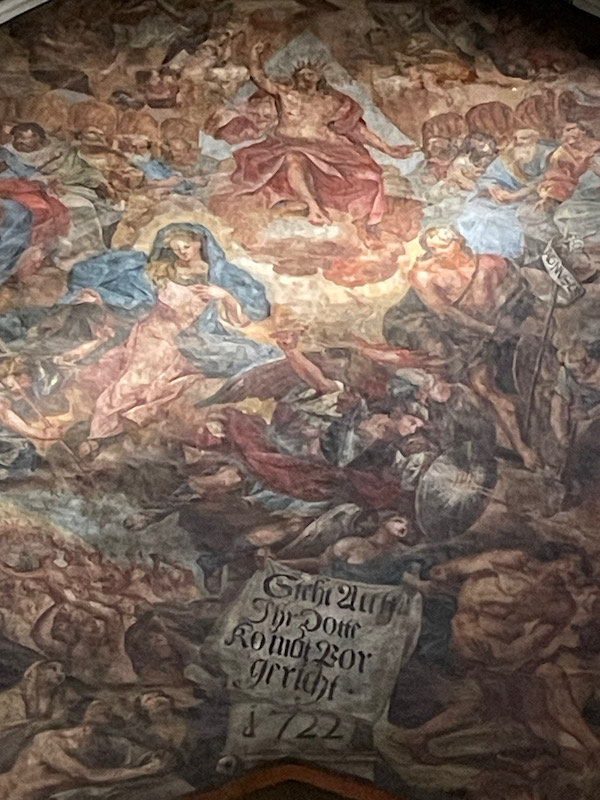
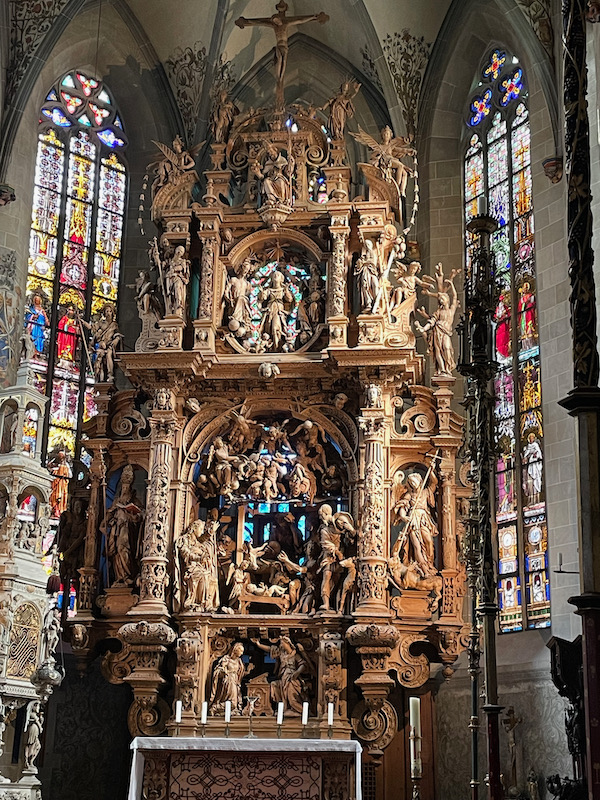
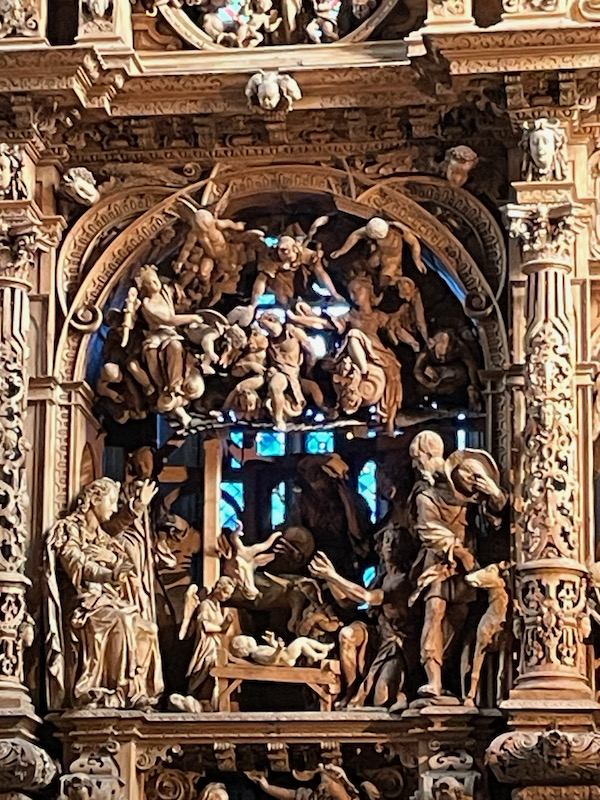
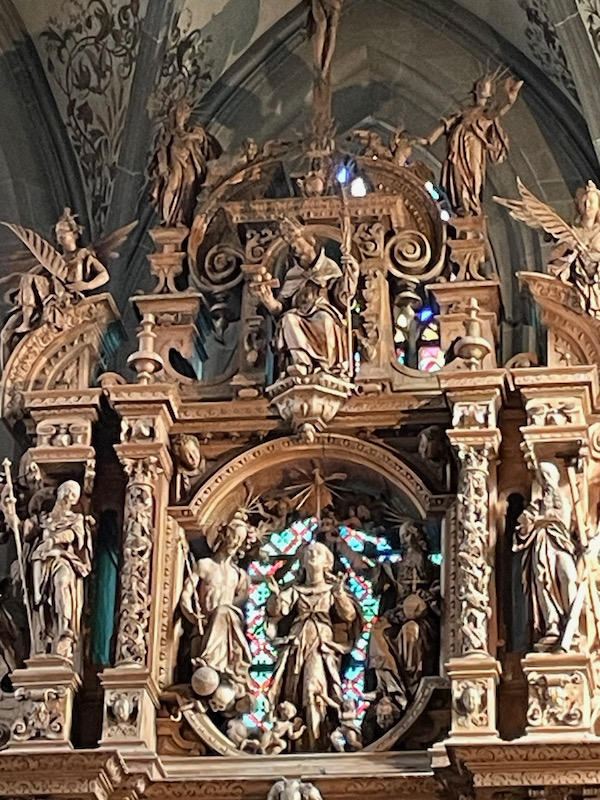
The Franciscan Gate, dating back to 1494 is last remaining city gate of the inner city wall ring. The late Gothic gate tower has a stepped gable, a pointed arch gate, and corner stones of yellow-greenish sandstone.
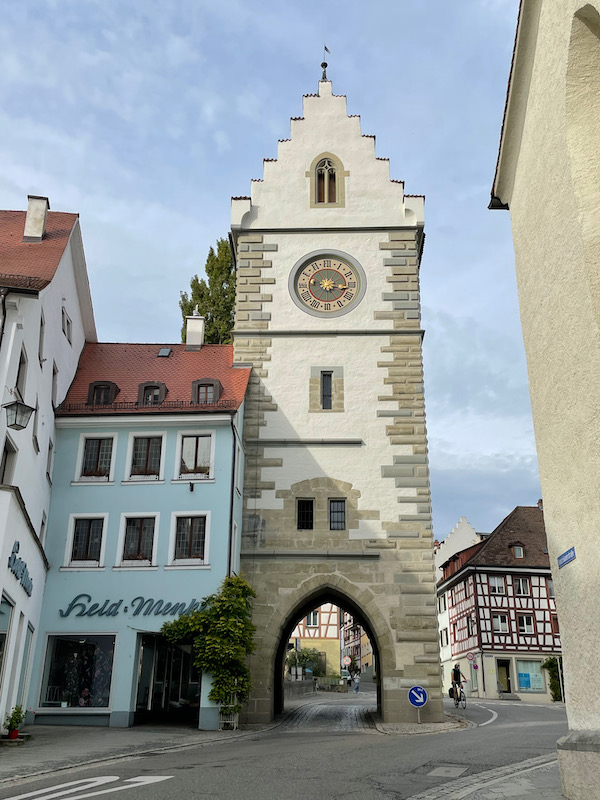
The Franziskanerkirche, or the Franciscan Church of the Immaculate Conception, is an originally Gothic, later Baroque-style former monastery church of the Franciscan Convent. The original church of the 14th century was extensively renovated in 1752 to convert from High Gothic to Baroque. This included a new vaulted roof structure that was painted in 1753.
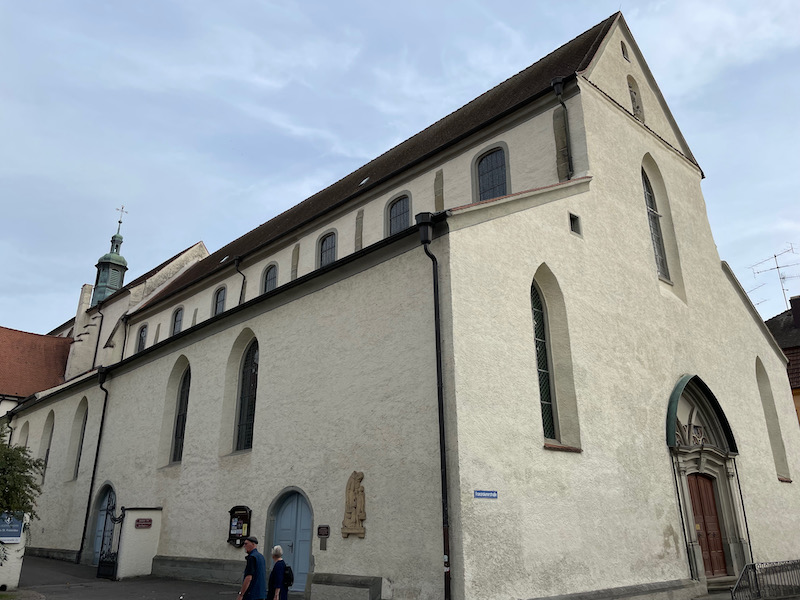
Here you can see the nave, which still has the Gothic arches but also the Baroque vaulted roof. At the top of the picture is what looks like a dome, but in fact, that is a "false" dome that is painted.
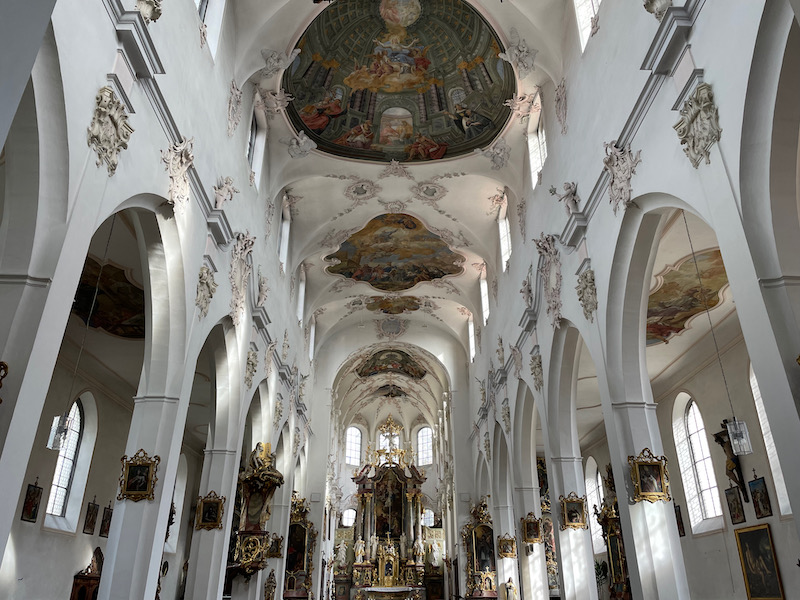
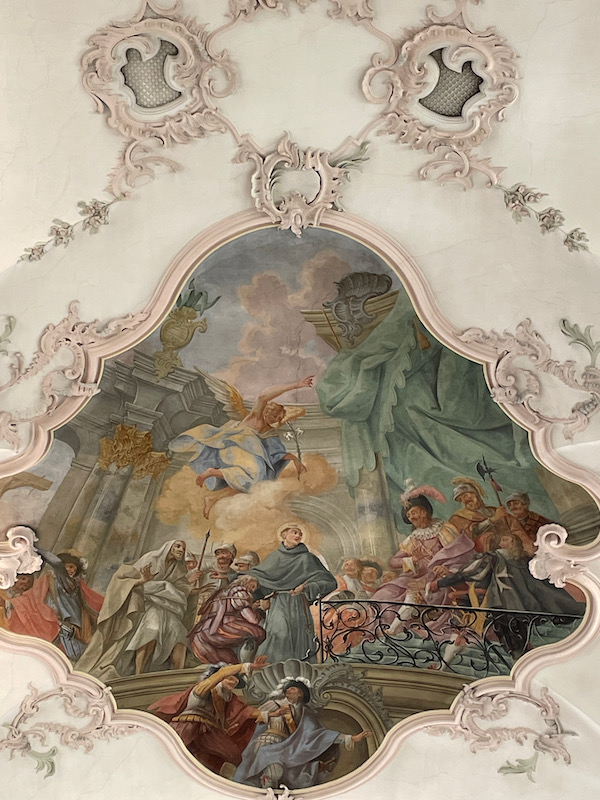
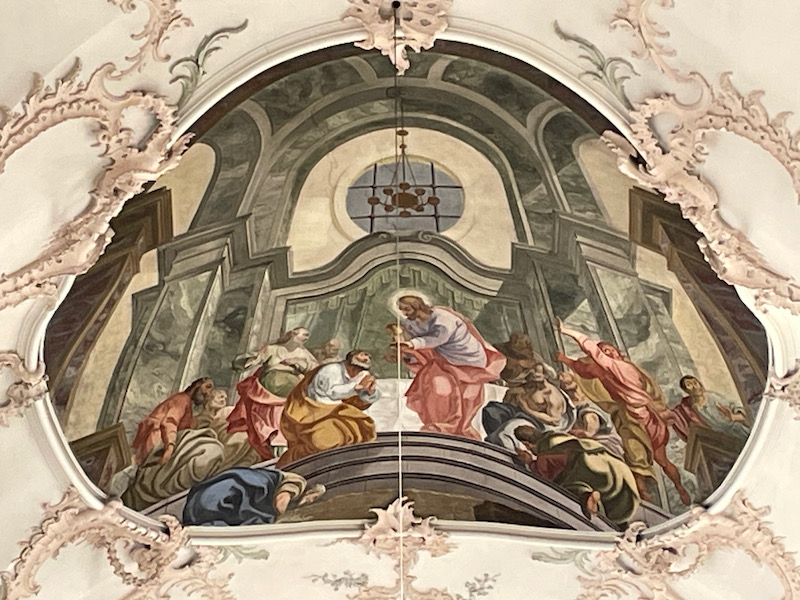
Another church with nicely-carved pews. The organ case, which was built in 1755, sits in the organ gallery above the main door. Next is the preaching pulpit with little cherubim's.
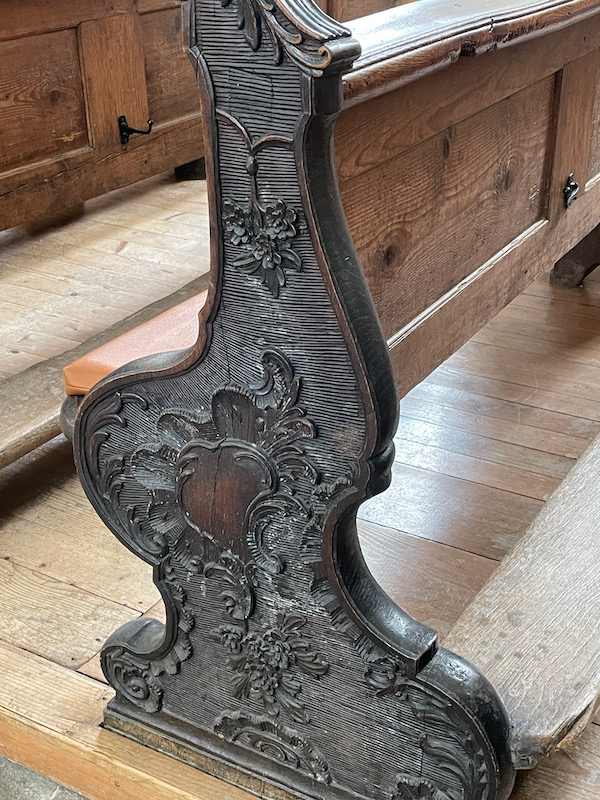
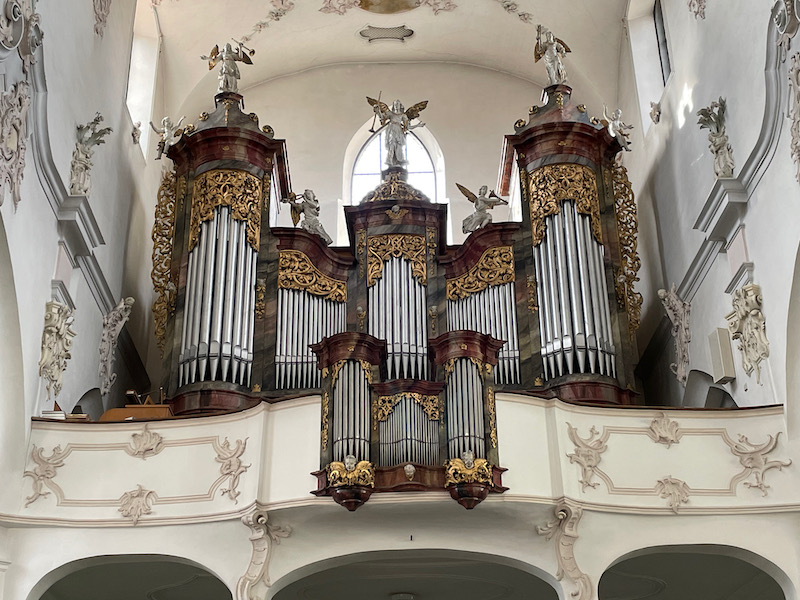
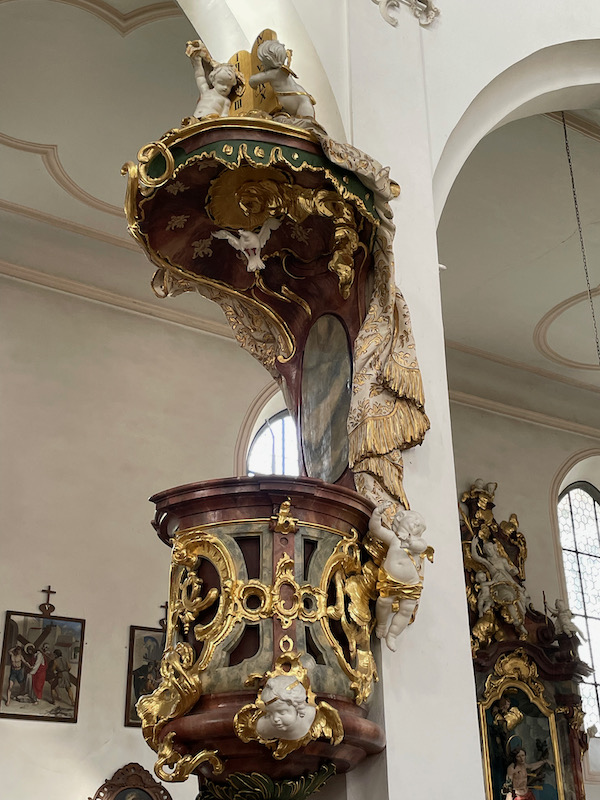
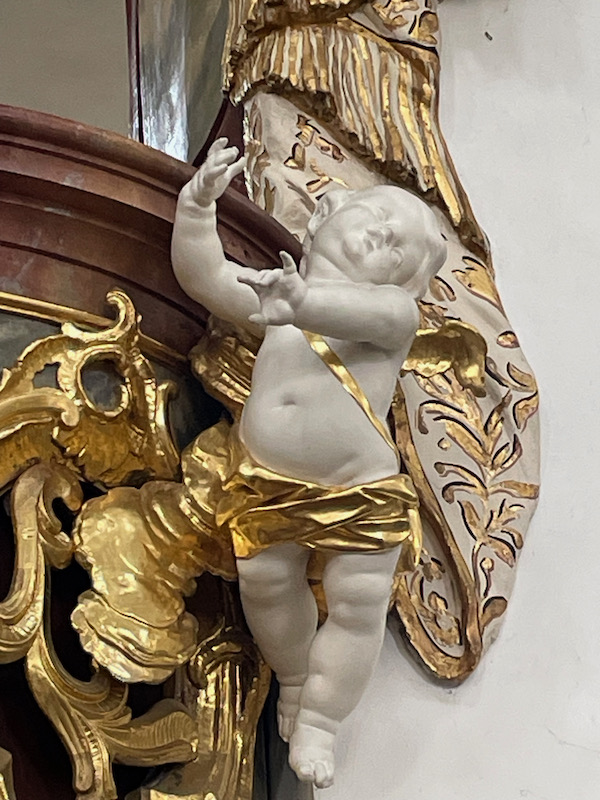
The Anthony of Padua Altar (1st picture) and the Francis altar (2nd and 3rd pictures) were created in 1764 and each are in a side aisle.
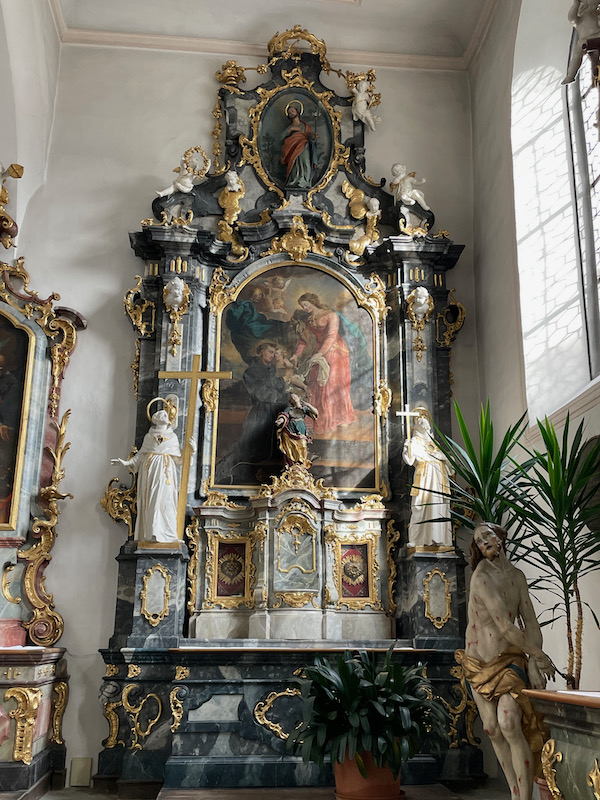
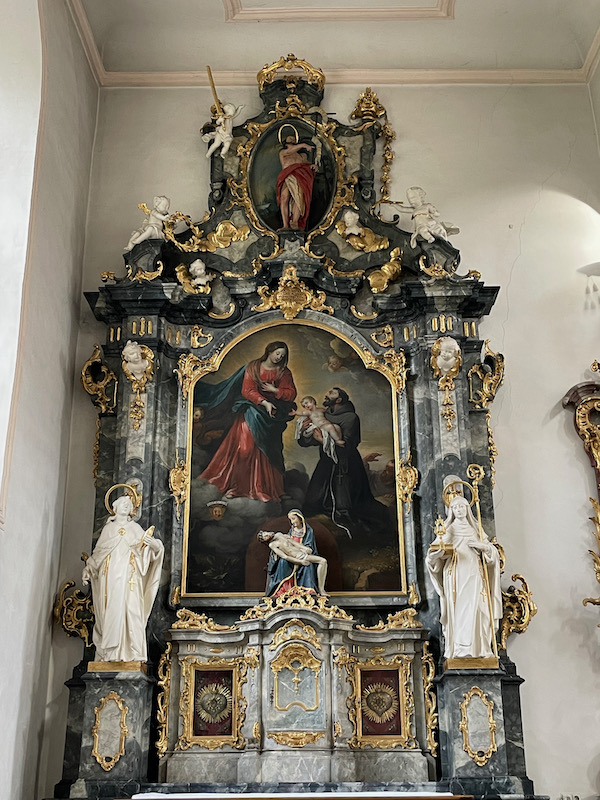
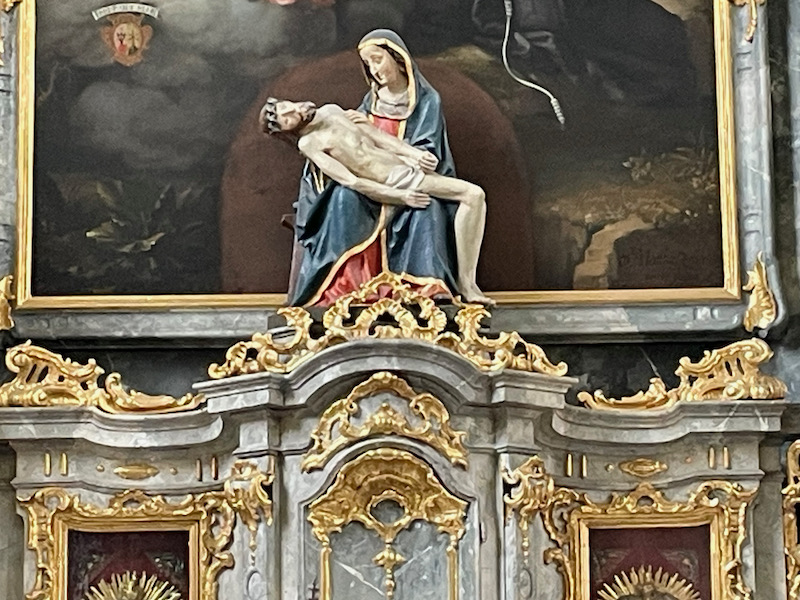
In between them is the main altar, built between 1754 and 1759. There are 4 stucco marble columns with white lime-wood sculptures. A canopy with a court angel rises above the altar.
